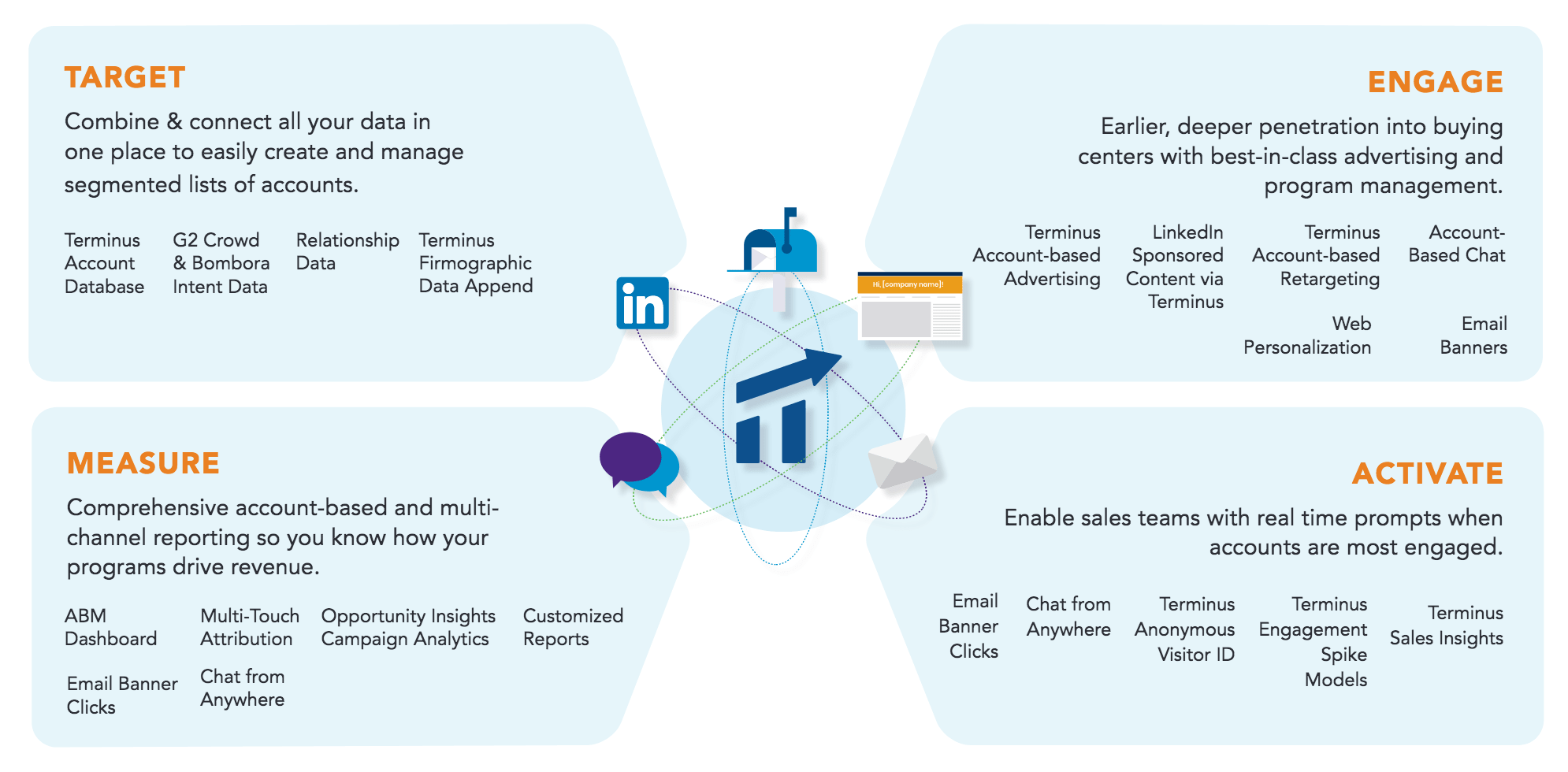Account-based marketing (ABM) has shot to popularity in recent years because it offers teams a focused, structured way to develop personal relations with their curated lists of target accounts – and of course, it’s a proven way to efficiently drive revenue.
With account-based marketing, your organization can be proactive and intentional by targeting the best-fit accounts that are most likely to buy from you. ABM is about honing in on these companies and creating a personalized buying process for each of them.
To some, this sounds daunting. But switching to ABM is more practical than you might think. You can use the TEAM framework — Target. Engage. Activate. Measure. — to put ABM into action.
Here, we’ll focus on the T in TEAM — targeting. After all, how can you consistently make sales unless you’re targeting the right types of accounts? To determine your best-fit accounts, you first have to define your ICP. And no — I’m not referring to a certain musical group that wears black and white face paint. In the B2B world, ICP stands for ideal customer profile.
What Is an Ideal Customer Profile?
It’s common for people to confuse ICP with buyer personas. Both are necessary, but they’re not the same. An ICP describes the characteristics that indicate a company is a fit for your solution. An ICP is not an individual buyer or end user within a company. Where ICPs focus on accounts, buyer personas are developed to highlight the individual stakeholders within those accounts and the breakdown of their individual roles and priorities.
An ICP should focus on relevant characteristics of your target accounts. Consider firmographics and technographics, including:
- Industry/vertical
- Employee headcount — companywide and within key departments
- Annual revenue
- Budget
- Geography
- Size of their customer base
- Level of organizational or technological maturity
- Installed technology
Keep in mind, if you sell multiple products or services, you may have multiple ICPs to account for their differences.
Determining Your Ideal Customer Profile
Say you sell a customer relationship management (CRM) software for the fitness industry. Does that mean every gym in the U.S. is a potential customer? Not according to your ICP. Your ideal customers might be national franchises with more than 65 office staff members, budgets of over $10 million, and thousands of customers spread throughout the region or country. Your ICP does not include sole proprietors with a team of two to five and a customer base of a couple hundred.
The more specific you can make your ideal customer profile, the better. That’s why it’s up to your team to determine which factors are the most important to include in your ICP.
During this exercise, however, it can sometimes be challenging to get everyone on the same page. To help guide you through the process and ensure team alignment, we created a multipage worksheet to help you arrive at your ICP. We recommend scheduling a time with the marketing, sales, and customer success leadership to work through this together.
By working through this worksheet, you’ll understand exactly how to define and narrow down your ICP to kick off your ABM initiative. Just keep in mind that if your company’s product offerings evolve or expand, your ICP will need to be updated accordingly.
With that in mind, here are a few ways to get started on developing or updating your ICP.
Customer-Based Ideal Customer Profile
One way is to turn to your existing customer base by digging into your CRM data. This is a bottom-up approach in which you identify what’s currently working in your broader market. Start with the data you’ve amassed from your best customers. Look at which accounts have landed you the largest deal sizes, have the greatest potential for expansion and longevity, and where you’ve had the greatest success. Then identify common characteristics among these best-fit customers such as geography, industry, employee headcount, annual revenue, or technological capability.
On the flipside, you can look at any customers over the last 12 months that did not renew with you. What patterns do you see among these accounts?
By digging deep to discern which attributes these top accounts and renewals share, you’ll have a clearer understanding of exactly which types of companies see success with your solution, which will help you tailor your ICP.
Characteristics-Based Ideal Customer Profile
Where the customer-based ICP is a bottom-up approach, the characteristics-based approach is from the top down. This method is ideal if you’re a young company with little to no historical data to work from, or if you’re moving into a new market or launching a new product line that will reach a different customer base.
Using the above example of the CRM for the fitness industry, let’s say you’re building integrations with custom inventory tools to track in-gym purchase behaviors, monitor product purchases and inventory, and send alerts to all relevant parties. This feature would appeal more to gym managers and product purchasers who are responsible for inventory and retail sales. Obviously a much different ICP than the marketers the CRM appeals to, which means it’s time to develop a new ICP.
In this case, you won’t have historical data to reference, so it will require a little more research. To begin, take into account geography, technical fit, experience fit (do you have the capabilities in your current state to meet their needs), annual revenue, number of locations, etc. While this ICP will likely evolve as you go, the goal is to gain as much intel as possible to determine if there’s an opportunity to build a long-term, high-value relationship with this account.
With your ICP in place, you’ll be ready to identify and prioritize a list of target accounts. (More on how to do that here.)

